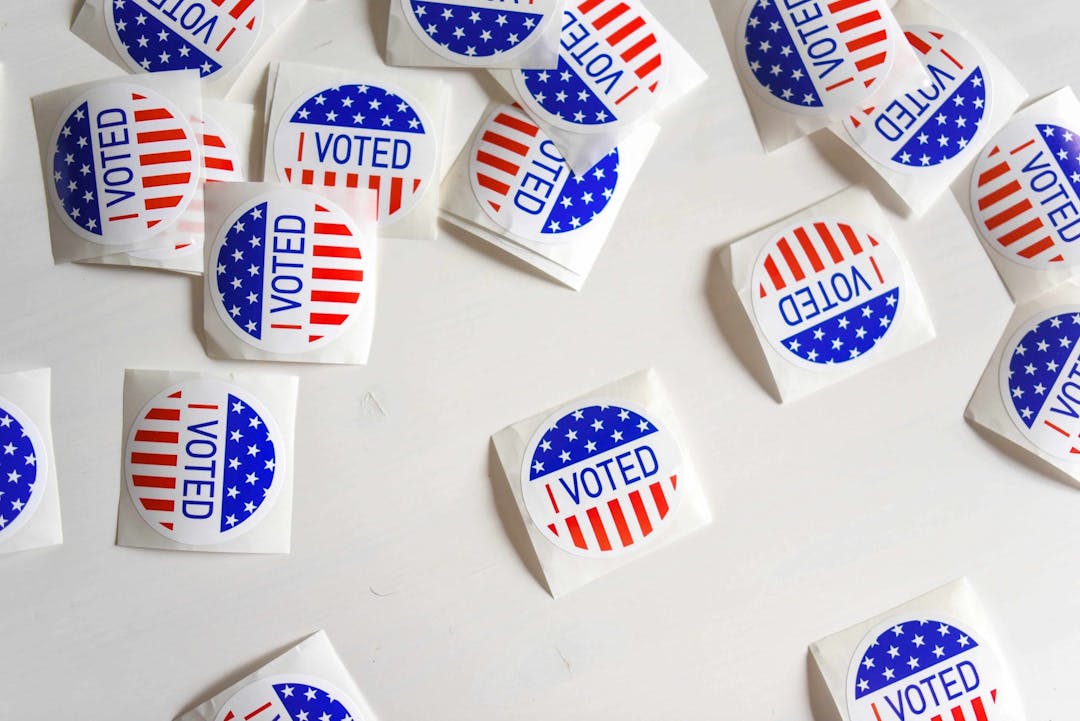Is a Biased Vote Better Than No Vote?
Historically, the US hasn’t been very impressive when it comes to voter turnout. In 2016, only 55.7% of the voting-age population voted. In fact, of developed countries, US voter turnout ranks 31 out of 35.1 With one of the most pivotal elections in US history approaching, the calls to action for citizens to vote are loud and clear everywhere, be it on social media, the news, or through friends and family.
We are urged to vote because we must make our voices heard. We are constantly told that our vote holds influence and that our vote is our voice. Higher voter turnout is associated with stronger representation. However, there are specific biases that may influence our decision to vote, or our vote itself, and these “get out the vote” campaigns may actually contribute to such biases.
Regret avoidance and the decision to vote
Early studies conducted by Daniel Kahneman and Amos Tversky found that action often induces more regret than inaction.2 Action can be defined as performing an action that changes (or has the potential to change) a particular situation. In contrast, inaction can be defined as keeping the status quo and doing nothing. Inaction is considered the norm, and so imparts less blame on the individual.3 This phenomenon has been termed the ‘action effect’ — if both action and inaction led to failure, there would be more regret associated with an action.
Here is a vignette to better understand this:
Eric is an investor who holds stock in Company A. He had the option to switch to Company B, but didn’t. He now realizes that if he had done so, he would have been $1000 better off.
Carl is also an investor, and he holds stock in Company B. Carl chose to switch to Company A. He now realizes that if he hadn’t switched, he would have been $1000 better off.
Who is more upset: Eric or Carl?
Eric and Carl are both in the same situation as a result of their decision. The only difference is that Eric chose inaction, while Carl chose action. Yet, 92% of study participants anticipated that Carl would be more upset than Eric.
The action effect may contribute to the decision to not vote. Perhaps people unconsciously worry that their vote can have some unforeseen consequences that they are not fully supportive of, and they would be partly responsible for these consequences. Therefore, they resort to inaction. The alternative — voting — is associated with greater anticipated regret for bad outcomes. This is ironic because many pushes to vote emphasize the importance of a vote, and because of this, some may shy away from taking on that personal burden of responsibility and not vote
Behavioral Science, Democratized
We make 35,000 decisions each day, often in environments that aren’t conducive to making sound choices.
At TDL, we work with organizations in the public and private sectors—from new startups, to governments, to established players like the Gates Foundation—to debias decision-making and create better outcomes for everyone.
The status quo bias and voting behavior
Status quo bias (also known as default bias) is the tendency to prefer keeping things the same by doing nothing and/or sticking with a previous decision.4 This bias can be explained in part by regret avoidance and the action effect. Sticking with choices that have worked in the past is often seen as a safe decision, albeit one that isn’t necessarily rational. This is due to the concept of bounded rationality, which attributes our suboptimal decisions to limitations in the amounts of time, information, and mental capacity available for decision making. This is why choice overload, high uncertainty, and high deliberation costs can increase susceptibility to choosing the status quo.5,6 Voting fits this description.
One study found that in an iterative game, many voter participants chose to stick with the same candidate they voted for in the last round. This was the result even when the scenario changed so that an apparently stronger candidate required a change in vote, and can be explained by default bias where the individual’s last vote is considered the default action.7
Another study examined how status quo bias may influence voting by assigning ballots with different wordings to different survey respondents. When the language on the ballots included the existing status quo, voters were more likely to vote consistently with the status quo. Moreover, it was the least informed individuals that were the most influenced by the status quo bias.8
Confusion and lack of understanding can impair voters’ abilities to translate their true preference onto the ballot. This then raises the following question:
Is a biased vote more democratic than no vote?
A common reason people cite to justify not voting is that they do not know enough to make a politically informed decision. This makes sense since elections often involve several candidates, different stances on complex issues, and complicated processes. This ties into the idea of regret avoidance– the idea that we may not feel particularly suited to make a decision with such great value and personal responsibility if we believe that we are not fully educated about the topic.
If people are convinced to vote for this reason, then their vote may be more susceptible to the status quo. They may also be more prone to the bandwagon effect and to following the views pushed by various media sources, due to high uncertainty. In this situation, higher voter turnout may not actually be representative of more individuals voting in accordance with their true belief sets. It would be interesting for research in political behavioral science to investigate if uncertain individuals who have never voted are more likely to vote for the residing incumbent.
Current pushes to vote strongly encourage everyone to make their voice heard. Understanding how regret avoidance and uncertainty can bias individuals’ decisions to vote or their actual vote can better inform political campaigns designed to increase voter turnout. Along with pushing to vote, it is important that individuals are guided on how to make themselves more politically aware. Rather than overwhelming people with calls to register and vote, campaigns should raise awareness of current issues and how to learn more about the candidates and their stances. By doing so, not only can we decrease the influence of biases on voting behavior, but also increase voter turnout.
References
Barber, M., Gordon, D., Hill, R., & Price, J. (2017). Status Quo Bias in Ballot Wording. In Journal of Experimental Political Science (Vol. 4, Issue 2, pp. 151–160). https://doi.org/10.1017/xps.2017.9
Dean, M., Kıbrıs, Ö., & Masatlioglu, Y. (2017). Limited attention and status quo bias. In Journal of Economic Theory (Vol. 169, pp. 93–127). https://doi.org/10.1016/j.jet.2017.01.009
Kahneman, D., & Miller, D. T. (1986). Norm theory: Comparing reality to its alternatives. In Psychological Review (Vol. 93, Issue 2, pp. 136–153). https://doi.org/10.1037/0033-295x.93.2.136
Kahneman, D., & Tversky, A. (1982). The Psychology of Preferences. In Scientific American (Vol. 246, Issue 1, pp. 160–173). https://doi.org/10.1038/scientificamerican0182-160
Meir, R., Gal, K., & Tal, M. (2020). Strategic voting in the lab: compromise and leader bias behavior. In Autonomous Agents and Multi-Agent Systems (Vol. 34, Issue 1). https://doi.org/10.1007/s10458-020-09446-x
Nebel, J. M. (2015). Status Quo Bias, Rationality, and Conservatism about Value. In Ethics (Vol. 125, Issue 2, pp. 449–476). https://doi.org/10.1086/678482
Samuelson, W., & Zeckhauser, R. (1988). Status quo bias in decision making. In Journal of Risk and Uncertainty (Vol. 1, Issue 1, pp. 7–59). https://doi.org/10.1007/bf00055564
U.S. voter turnout trails most developed countries. (n.d.). Retrieved September 7, 2020, from https://www.pewresearch.org/fact-tank/2018/05/21/u-s-voter-turnout-trails-most-developed-countries/
About the Author
Sanketh Andhavarapu
Sanketh is an undergraduate student at the University of Maryland: College Park studying Health Decision Sciences (individual studies degree) and Biology. He is the co-Founder and co-CEO of Vitalize, a digital wellness platform for healthcare workers, and has published research on topics related to clinical decision-making, neurology, and emergency medicine and critical care. He is also currently leading business development for a new AI innovation at PediaMetrix, a pediatric health startup, and previously founded STEPS, an education nonprofit. Sanketh is interested in the applications of behavioral and decision sciences to improve medical decision-making, and how digital health and health policy serve as a scalable channel to do so.




